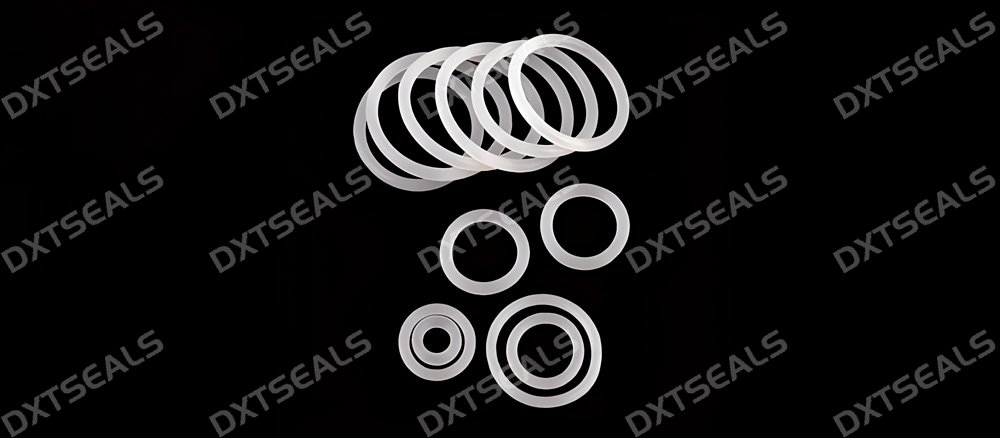Introduction
Rubber seals are critical components used across various industries to ensure the integrity of systems by preventing leaks, contamination, and maintaining pressure. They are found in everything from automotive engines to industrial machinery, providing reliable sealing solutions that enhance performance and extend the life of components.
In this guide, we’ll take a closer look at different types of rubber seals, explore the numerous benefits they offer, and highlight common applications across diverse industries.
1. Types of Rubber Seals
There are several types of rubber seals, each designed for specific purposes. Here are the most commonly used types:
1.1 O-Rings
- O-rings are one of the most common types of rubber seals, typically used to prevent fluid or gas leaks.
- They are circular in shape and can be used in static or dynamic applications.
- Materials: NBR, EPDM, FKM, and silicone.
1.2 Gaskets
- Rubber gaskets are used to create a seal between two mating surfaces to prevent leakage.
- They are available in various shapes and sizes, often used in flanged joints or pipe connections.
- Materials: NBR, EPDM, neoprene, and silicone.
1.3 Lip Seals
- Lip seals have a lip or flange that presses against a shaft or housing, creating a seal.
- These seals are commonly used in applications like bearings and pumps, where preventing contaminants is crucial.
- Materials: NBR, HNBR, and FKM.
1.4 U-Cups
- U-Cups are a type of rubber sealing element used in dynamic sealing applications. They are shaped like a “U” and offer high sealing force with low friction.
- Often used in hydraulic systems and pneumatic cylinders.
- Materials: NBR, PTFE, and polyurethane.
1.5 Custom Molded Seals
- Custom molded rubber seals are made to fit unique configurations, often designed for specific machinery or complex applications.
- They are typically used in automotive, aerospace, and medical equipment.
- Materials: Silicone, fluorosilicone, and Viton.
2. Key Benefits of Rubber Seals
2.1 Excellent Sealing Performance
- Rubber seals provide a tight seal between components, preventing leaks, contamination, and fluid loss.
- They are ideal for sealing both gases and liquids in pressure-sensitive systems.
2.2 Wide Temperature Range
- Rubber seals can withstand a broad temperature range, from cryogenic conditions to high temperatures of up to 300°C (572°F) depending on the material used.
- Specialized materials like Viton and silicone offer superior heat resistance for high-temperature applications.
2.3 Chemical Resistance
- Rubber seals are resistant to many chemicals, oils, and solvents, making them ideal for use in petrochemical and pharmaceutical industries.
- Materials like EPDM and FKM offer excellent resistance to harsh chemicals and environmental factors.
2.4 Flexibility and Elasticity
- The elasticity of rubber seals allows them to maintain a secure seal even in dynamic applications where components experience movement or vibration.
- This flexibility helps reduce wear and tear and provides long-lasting performance in rotating or oscillating applications.
2.5 Cost-Effective
- Rubber seals are cost-effective compared to other sealing materials like metals or plastics.
- They are widely available and can be easily customized for specific needs, making them an economical solution for many industries.
3. Applications of Rubber Seals
Rubber seals are versatile and used in a wide range of industries. Here are some of the most common applications:
3.1 Automotive Industry
- Rubber seals are used extensively in engines, doors, windows, fuel tanks, and air conditioning systems.
- They prevent leaks, reduce vibrations, and help maintain pressure balance in engine components.
3.2 Industrial Machinery
- In hydraulic systems, pumps, and motors, rubber seals help prevent fluid leakage and protect machinery from contaminants.
- Used in heavy equipment, conveyor belts, and gearboxes, rubber seals ensure smooth operation and minimize downtime.
3.3 Aerospace
- Rubber seals in aircraft prevent fuel, oil, and air leaks.
- O-rings and gaskets are used in engines, fuel systems, and cockpit seals to provide leak-free performance at high altitudes and extreme temperatures.
3.4 Food and Beverage Industry
- Rubber seals are widely used in food processing equipment and packaging machinery to maintain hygiene standards and prevent contamination.
- FDA-approved rubber materials, like silicone, ensure safe contact with food.
3.5 Medical Equipment
- Rubber seals are used in medical devices such as syringes, pumps, and infusion systems to prevent leaks and ensure sterility.
- Silicone and EPDM rubber seals are often used for their biocompatibility and resistance to sterilization processes.
3.6 Oil and Gas Industry
- Rubber seals help prevent leakage in valves, pumps, pipeline connectors, and pressure regulators.
- They are essential in subsea systems, exploration rigs, and offshore platforms, where they need to withstand extreme conditions.
4. Choosing the Right Rubber Seal
When selecting a rubber seal, it’s essential to consider the specific requirements of your application, such as:
- Temperature: Ensure the rubber material can withstand the temperatures involved.
- Chemical Exposure: Choose materials resistant to the specific chemicals or fluids.
- Pressure Conditions: Consider whether the seal will be used in static or dynamic conditions.
- Flexibility and Durability: Assess the level of movement and wear the seal will experience.
Consulting with an experienced seal manufacturer can help ensure that you select the right type of rubber seal for your needs.
Conclusion
Rubber seals play a critical role in protecting systems from leaks, maintaining pressure, and preventing contamination. Whether used in automotive, industrial, aerospace, or medical applications, rubber seals offer numerous advantages, including flexibility, durability, and cost-effectiveness.
By selecting the right type of rubber seal, businesses can improve performance, reduce maintenance costs, and extend the service life of their equipment.

